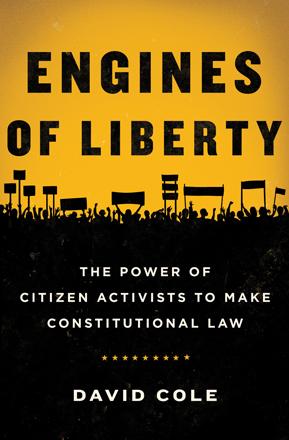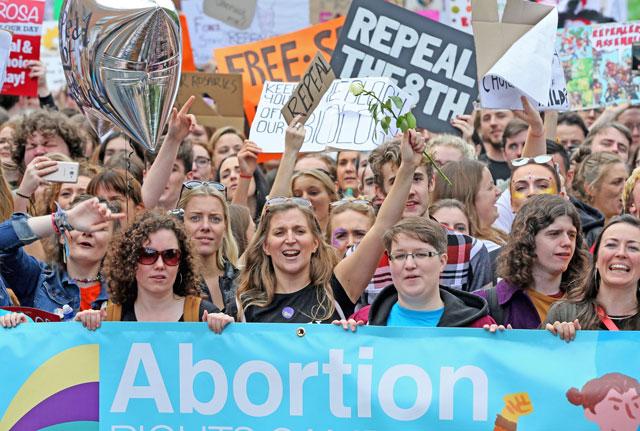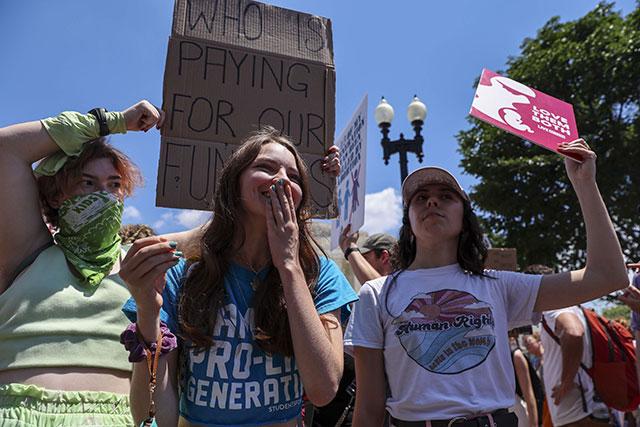You are here
Old and new avenues to change
By Sally Bland - Sep 10,2017 - Last updated at Sep 10,2017

Engines of Liberty: The Power of Citizen Activists to Make Constitutional Law
David Cole
New York: Basic Books (Perseus), 2016
Pp. 307
Most people view constitutional law as relatively immutable, subject to change only occasionally by the supreme court or popular referendum, and there is truth in that view: “constitutional reform is not supposed to be easy. The constitution is designed to insulate certain principles and norms from the winds of political change”. (p. 7)
In the US, after the first ten amendments known as the Bill of Rights, only 17 amendments have been adopted in over 200 years.
It is also commonly assumed that constitutional change involves mainly lawyers, judges and stuffy courtrooms, but “Engines of Liberty” reveals the less-recognised role of civil society. The author, David Cole, a leading civil liberties lawyer and professor at Georgetown University, argues that “civil society groups play an equally important part in shaping constitutional law. At their best, they are the catalysts of constitutional change — the engines of liberty”. (p. 6)
To prove his point, Cole examines the strategies employed by three movements that began their work outside the courts in order to later succeed in court. The first of these is the movement for marriage equality, i.e., to have same-sex marriage legalised. Early advocates of same-sex marriage “soon learned that constitutional change required much more than a well-footnoted [legal] argument”. (p. 24)
They adopted an incremental approach, pushing for marriage equality at the state level, starting with states considered more progressive, in order to influence federal courts. They learned that to get public backing, they needed to present their case in human terms rather than as a question of rights. Public relations campaigns were mounted to dispel stereotypes about gays and lesbians, and to show that gay and lesbian couples, like everyone else, wanted to marry because of love and commitment.
In 2015, after over 20 years of campaigning, the US Supreme Court recognised that the constitutional right to marry applies to all. This may seem like a long haul, but “constitutional law tends to move at a glacial pace, and especially at the end, the progress on marriage equality was anything but glacial”. (p. 78)
The second movement examined is for the right to bear arms led by the National Rifle Association (NRA). Though seemingly worlds apart from the movement for marriage equality, it also adopted the state-by-state strategy and worked extensively outside of federal courts. Established in 1871 to promote marksmanship, the NRA has long had massive membership and resources, though Cole points out that its success depends not on money but on its ability to mobilise members to vote for candidates who oppose gun control. The Second Amendment of the US constitution was not originally interpreted as protecting individuals’ right to bear arms, but as giving states the right to raise militias. From the late 70s, however, the NRA campaigned for the right of the individual to bear arms, and in 2008 the US Supreme Court ruled that the Second Amendment does indeed protect this right.
The third campaign examined is completely different than the two above. It concerns the abuses of the Bush Administration’s war on terror: holding prisoners without judicial hearings or access to lawyers at Guantanamo or secret prisons around the world, torture, rendition, etc.
Patently illegal, these abuses were at first shrouded in secrecy; it was difficult to get information about the victims, much less to contact them or elicit public sympathy for them in the post 9/11 climate. Yet, a small number of committed groups, chiefly the American Civil Liberties Union, the Centre for Constitutional Rights and Human Rights Watch, took up the challenge and devised new strategies: They “turned to foreign audiences and governments, exhorting them to bring pressure to bear on the United States to conform its actions to basic human rights. They successfully framed the debate as pitting the rule of law against ‘law-free zones’…” (p. 153-4)
The law suits they filed on behalf of detainees eventually resulted in a supreme court ruling that they had the right to judicial review of their cases: the [supreme] court, for the first time in its history, stood up to the executive and legislative branches acting together during wartime”. (p. 161)
Although the legacy of that period is yet to be resolved, the Bush Administration curbed many of its worst abuses in the face of international censure.
Cole’s account is lucid and comprehensive. While maintaining immaculate objectivity, he brings out the dynamic, human side of what goes into lawmaking, including personal sketches of the people who led the charge for recognition of rights they considered to be fundamental, and interviews with many of them. This makes his book lively as well as instructive.
His own involvement in litigating for human rights and civil liberties in the “war on terror” signifies that he cares deeply about his subject. “Engines of Change” is inspiring; it should encourage those who take democracy and civil and human rights seriously, and are willing to struggle to defend and expand them. While the book is geared to the US political and legal system, rights activists in other countries will find many pointers on how to further the causes for which they advocate.
Related Articles
MELBOURNE — Margaret Court’s calendar-year Grand Slam jubilee will be commemorated at next year’s Australian Open, Tennis Australia announce
DUBLIN — Ireland will hold a referendum on liberalising its restrictive abortion laws at the end of May, Prime Minister Leo Varadkar announc
WASHINGTON — Protesters were expected to pour onto streets across the United States on Saturday as anger flared over the Supreme Court's dec















